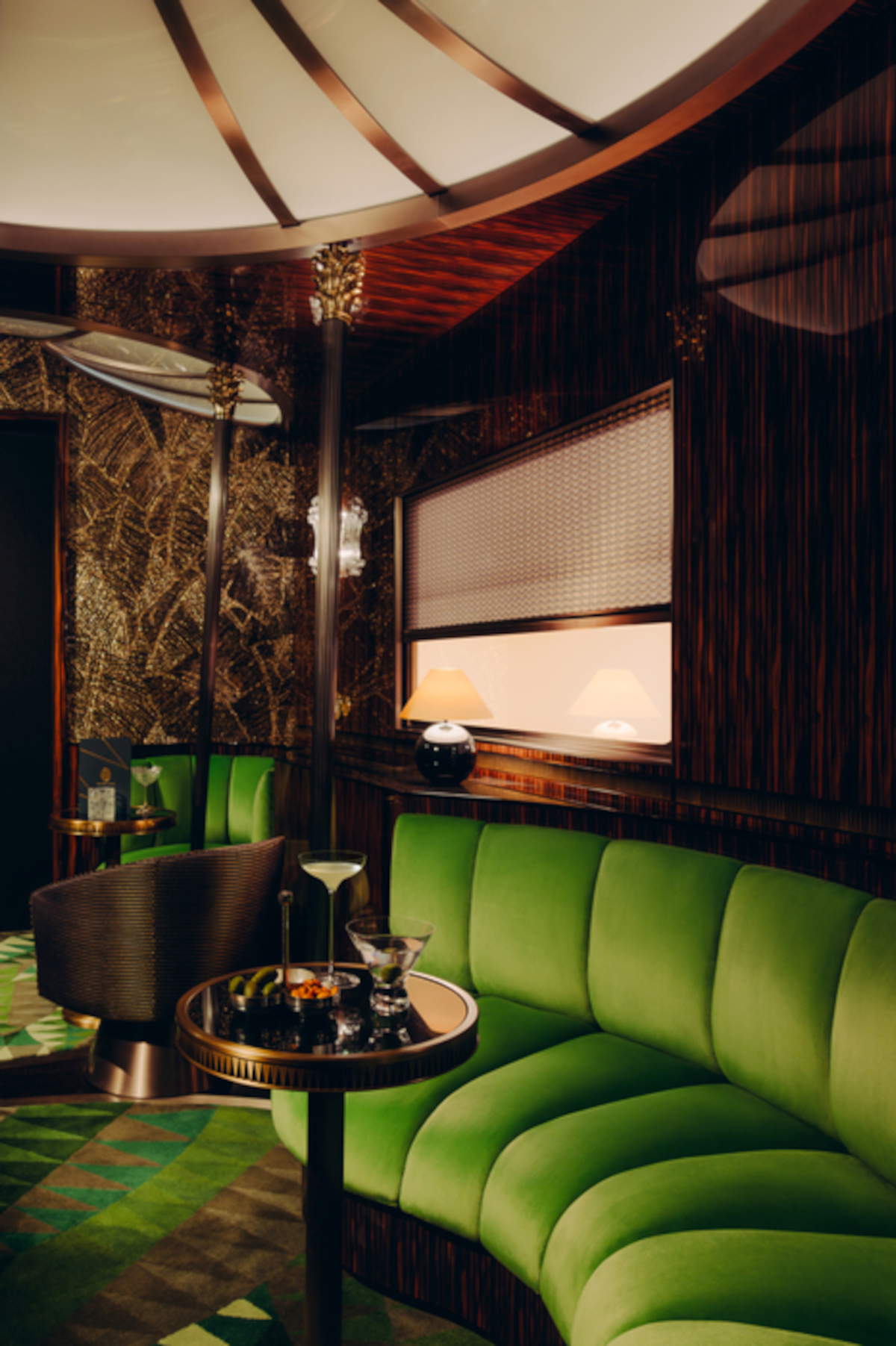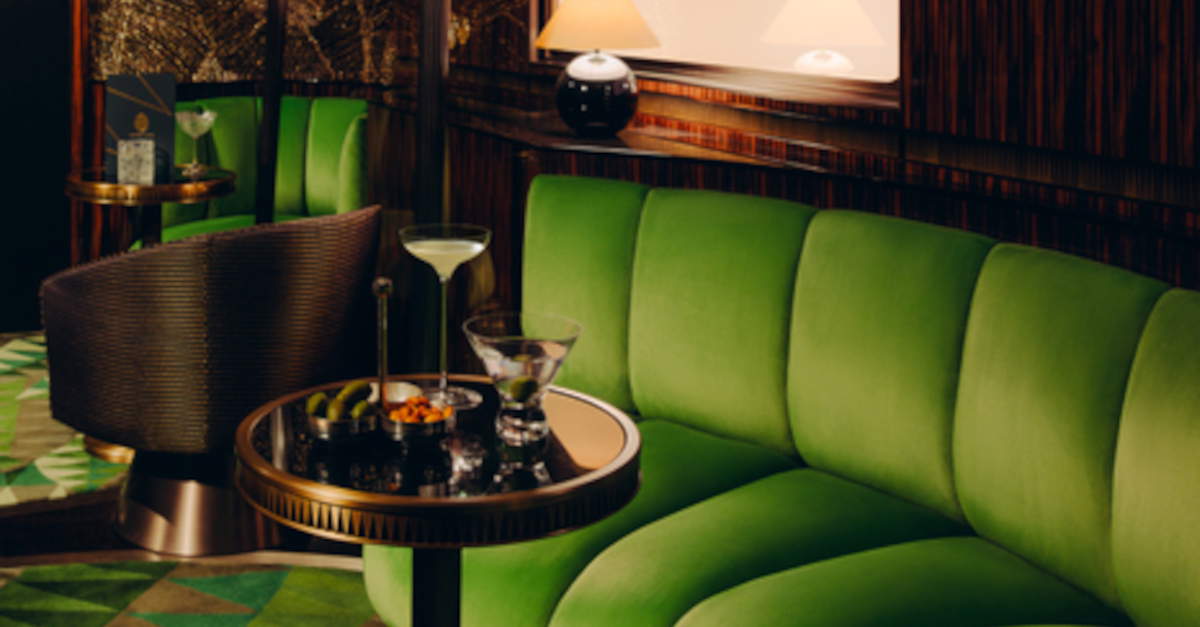A century after the 1925International Exhibition, which consecrated Art Deco on the world stage, the Musée des Arts Décoratifs in Paris pays tribute to this bold, refined, and modern style. From October 22, 2025 to April 26, 2026, the exhibition 1925-2025. One Hundred Years of Art Deco invites visitors on a journey into the heart of the Roaring Twenties. More than 1,000 works-furniture, jewelry, objets d’art, drawings, posters, and fashion garments-tell the richness and contradictions of a movement that continues to fascinate with its timeless elegance. Immersive sets, precious materials, stylized forms and exceptional craftsmanship build a path in which Art Deco reveals all its facets.
At the opening of the exhibition, the protagonist is theOrient Express, a symbol of travel and luxury. An original 1926 cabin from the Étoile du Nord train dialogues with three life-size models of the future Orient Express, designed by art director Maxime d’Angeac.
The exhibition, curated by Bénédicte Gady, director of museums, and Anne Monier Vanryb, with installation by Atelier Jodar and Studio MDA, traces the birth, apogee and contemporary reinterpretations of the style.
Born in the 1910s out of the European debate on ornamentation and inspired by Art Nouveau, Art Deco reached its full development in the 1920s, distinguished by an elegant and rigorous style that combined modernity and precious materials. This style, an expression of an era marked by a strong thirst for novelty and freedom, influenced all fields of creation: architecture, furniture, fashion, jewelry, graphic arts and transportation. The exhibition itinerary reflects this richness, from the geometric abstraction of Sonia Delaunay and Robert Mallet-Stevens, to the formal purity of Georges Bastard and Eugène Printz, to the decorative taste of Clément Mère and Albert-Armand Rateau.
The Musée des Arts Décoratifs, a leading player in the appreciation of Art Deco since its origins, draws on its historical collection and prestigious international loans for the occasion, presenting masterpieces such as André Groult’s galuchat chest of drawers, Jacques-Émile Ruhlmann’s refined creations and Pierre Chareau’s desk-library designed for the French Embassy.
Three key figures are particularly celebrated: Ruhlmann, Eileen Gray and Jean-Michel Frank, each interpreting a different face of Art Deco. The museum also recalls the rediscovery of the style in the 1960s, thanks to the landmark exhibition Les Années 25, which revived its popularity with the public and experts, and the renewed interest in the 1970s, fueled by personalities such as Yves Saint Laurent and decorator Jacques Grange.

Organized in a broad chronological and thematic itinerary through the nave and upper galleries, the exhibition explores every aspect of Art Deco: from the lacquers of Jean Dunand to the glassware of François Décorchemont, from the geometric jewelry of Raymond Templier and Jean Desprès to the furniture of Groult and Printz. Special attention is given to drawing, the centerpiece of decorative and interior design of the period. The section devoted to fashion and the textile arts brings together garments and accessories by Madeleine Pangon, Madeleine Vionnet, Sonia Delaunay, and Jeanne Lanvin, as well as drawings and window displays that testify to the style’s influence on the taste of the period. A symbol of French savoir-faire, the Orient Express experienced its heyday in the 1920s, with decorations signed by René Prou and the Laliques.
A selection of more than 80 pieces of jewelry-necklaces, tiaras, watches, beauty cases and designs-witnesses the impact of Art Deco on the goldsmith’s art. Geometric shapes and motifs inspired by the Orient reflect the elegance and modernity of a style that seduced an international audience.
A century after its birth, Art Deco continues to inspire for its modernity, freedom and formal refinement. Through a dialogue between past and present, the exhibition at the Musée des Arts Décoratifs aims to be a tribute to a golden age, but also a reflection on the contemporary vitality of a style that still embodies luxury, creativity and innovation.
 |
| The Musée des Arts Décoratifs in Paris celebrates 100 years of Art Deco. Also on display is the Orient Express |
Warning: the translation into English of the original Italian article was created using automatic tools. We undertake to review all articles, but we do not guarantee the total absence of inaccuracies in the translation due to the program. You can find the original by clicking on the ITA button. If you find any mistake,please contact us.